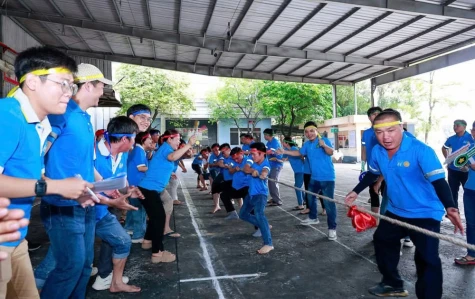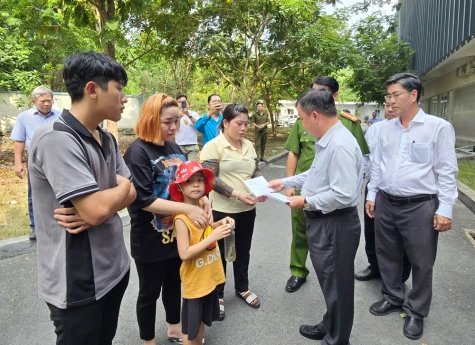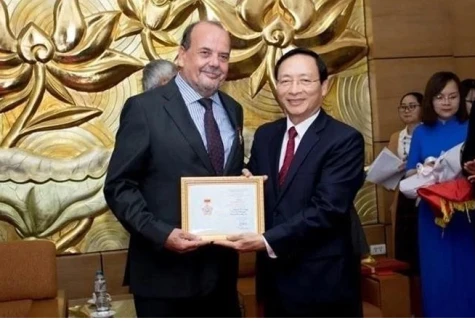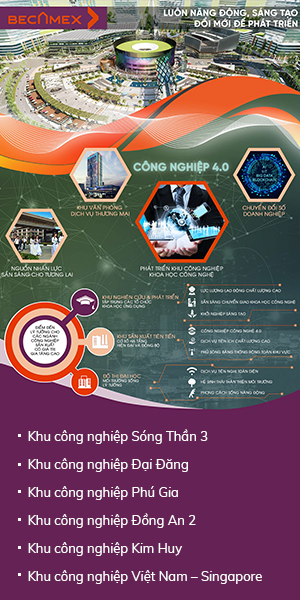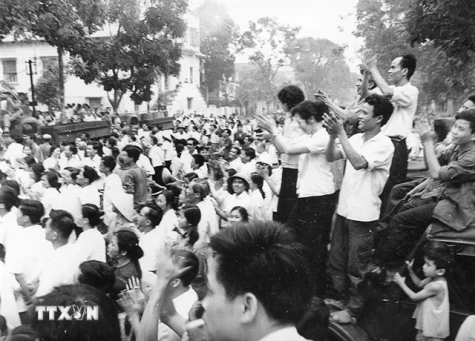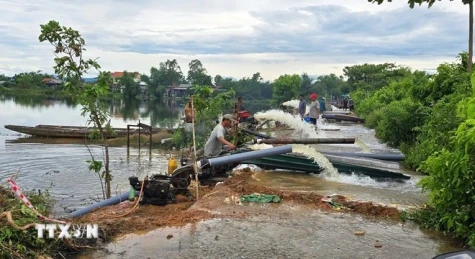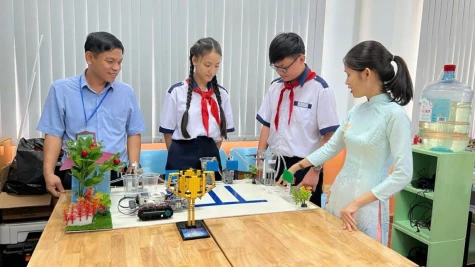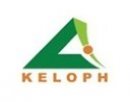In the current trend of green economic development, activities such as classifying waste separation, reusing old items and saying no to plastic bags are gradually becoming habits among local residents. Contributing to this transformation, the media has played a pivotal role as a bridge between policies and the people, inspiring behavioral change towards environmental protection through simple actions.
Effective waste classification at source
Recently, Huynh Thi Thu Hong in Bach Dang commune’s Dieu Hoa hamlet in Tan Uyen city has maintained the habit of classify waste at source. “Previously, I separated waste only to make cleaning easier. After hearing the commune's radio broadcast and being informed by local officials about the waste classification program, I realized that this practice not only keeps the yard and house clean, but also contributes to protecting the environment. I also encouraged neighbors to join in classifying waste at source”, she shared.

Currently, many residents of Bach Dang commune actively participate in waste classification at source. This result is attributed not only to the communication efforts by authorities, but also to the important role of local media and grassroots radio stations in spreading environmental protection messages. Programs like “Clean Up Pollution – Turn Dump Sites into Flower Gardens”, “Green Living Every Day” and “Planting Flowers and Trees” by local media and commune bulletins have helped promote eco-friendly awareness in the community.
According to leaders of Bach Dang commune, behavioral change in environmental protection will only be sustainable when people understand the issue and the media serves as a key tool to foster that understanding. News articles that are relatable, practical, emotionally engaging and based on real people and events help make environmental information more accessible and more widely accepted.
In the Railway Residential Area (DA1 Zone) in Di An city’s Di An ward, residents have participated in waste classification at source over the past few years. Le Thi Huong, who lives on Street No. 2 in DA1 shared that since the source-separation program was introduced and promoted, her family has developed the habit of sorting waste and disposing of it on the designated days, no longer mixing different types of waste as before. Similarly, Nguyen Thi Khanh Ha, another resident of DA1 said that at first, people were unfamiliar with how to separate waste at source, but after receiving training and guidance, everyone has now become accustomed to the practice. Her family classifies inorganic and organic waste into two different bins placed in the house, which are then taken to designated locations for collection and treatment. This practice not only helps maintain hygiene in the home, but also contributes to environmental protection and urban aesthetics.
Spreading green environment via media
In Bach Dang commune, Tan Uyen city, the model of the Women’s Scrap Collection Club, which turns waste into funding sources, has been expanded and replicated. Stories of women collecting bottles and cardboard to raise charity funds supporting disadvantaged women have touched thousands of hearts and attracted support from many organizations.
Ngo Thi Minh Lan, Head of the Scrap Collection Women’s Club shared: “Initially, we just hoped to raise environmental awareness through this activity. But when media outlets like Binh Duong Radio and Television Station and Binh Duong Newspaper reported on us, many people contacted us to learn more about the model. Provincial authorities even invited us to share and present the model in other locations. I believe the media serves as a launchpad that allows ideas and initiatives to reach farther”.
More than just delivering information, the media has become a companion to authorities and communities in environmental protection efforts. Binh Duong Newspaper and Binh Duong Radio and Television Station frequently publish series on composting organic waste, introducing handicrafts made from recycled items and more, helping awaken a sense of responsibility among the public in protecting the environment.
Environmental experts have pointed out that amid rapid industrialization and urbanization nationwide, the pressure to manage waste from both production and daily life is immense. Media and communication need to take the lead in changing public awareness about environmental protection. Even a small behavioral change—like disposing of waste in the right place or using a personal water bottle—can help reduce pollution. When the media accompanies the community, even small environmental protection habits can contribute to building a green economic ecosystem... |
Reported by Tien Hanh-Translated by Kim Tin













